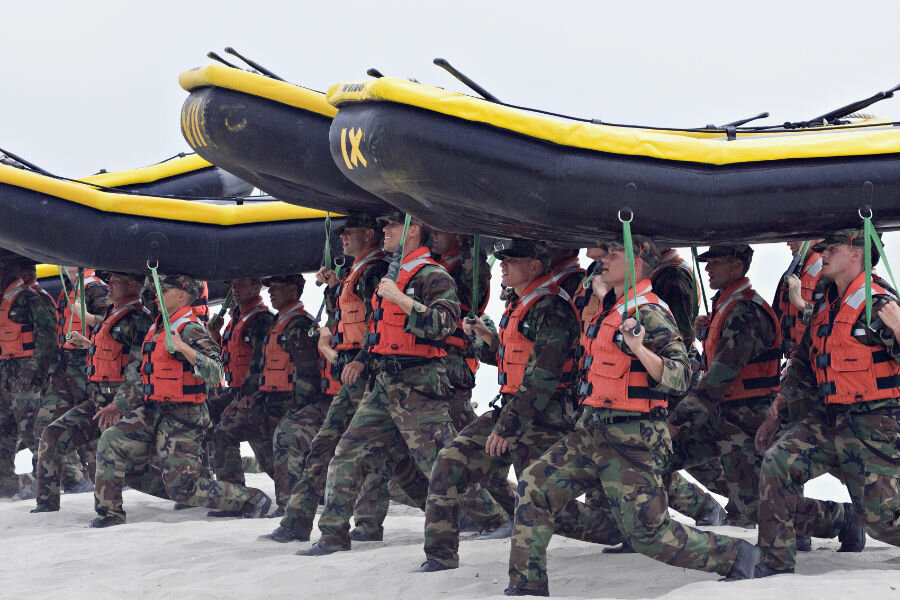Will recent deaths tame Navy SEAL training?
Loading...
During his first week of Navy SEAL training, James Derek Lovelace died after he was pushed underwater by an instructor during training in a large pool.
A medical examiner ruled his death a homicide, raising questions about the intensity of the SEAL's legendarily hard training procedures, not long after the April suicide of another trainee, who had dropped out of the program hours before.
Seaman Lovelace was wearing full gear and struggling to tread water when he was pushed underwater by an instructor. Protocol for instructors allows them to splash, make waves, and yell at trainees, but does not allow them to forcibly send them underwater, although several former SEALs told the Associated Press that the trainer's actions did not seem out of the ordinary.
"It is our opinion that the actions, and inactions, of the instructors and other individuals involved were excessive and directly contributed to the death," the medical examiner's report concluded.
Lovelace had been participating in the SEAL's "Hell Week", spent doing intense land and water training with only four hours of sleep in total. Seventy-five percent of those who begin the training program drop out by the last day.
In April, 23-year-old Danny DelBianco committed suicide hours after dropping out of training, as NBC News reported. This was the first time in the program's history a recent dropout had committed suicide, but other dropouts said the program left mental health scars, including symptoms of post-traumatic stress disorder.
Dropping out causes a lot of grief to failed trainees, Jamie Monroe, a former SEAL who coaches potential trainees, told NBC.
After quitting, "your social network, and all of your friends that you've had for the last couple months, in a moment, are gone," he said. "Because now you represent something that they don't want to be. And so it's very, very hard for the average person to deal with that fact, and there is a lot of grief."
Following Seaman DelBianco's death, the SEALS instituted new rules requiring 24-hour supervision of dropouts, who remain in the Navy and are often moved to jobs on base as training continues.
"We can't bring these men back," DelBianco's father, Steve DelBianco, told NBC. "What matters now is whether these tragedies will transform how SEAL command handles young men at the very point when they've been broken, both physically and emotionally, especially after days of sleep deprivation."
Now, Lovelace's death has again spurred conversation about possible reforms to SEAL training, particularly after the homicide ruling, former Navy Capt. Lawrence Brennan told the AP.
"I think it's sort of a warning to revisit training procedures and make sure they are fully understood and implemented," he said.
But former SEALs and officials say the training, which can border on torture, is so famously challenging for good reason. Learning how to manage such difficult situations now allows SEALs to be prepared for the high-stress, dangerous missions they undertake, Brennan said.
"Waterboarding has been done on aviators going into combat because it was expected the enemies could do this to them in combat," he told the AP.
For former Navy SEAL commander Dan O'Shea, who believes the program's rigor is justified, the prospect of changing the program is worrisome.
"Changing standards would mess with a process that has proven its mettle since 1962 and produced the most elite fighting force on the planet, one that took out Osama Bin Laden. Why mess with perfection?" he asked.
This report contains information from the Associated Press.






